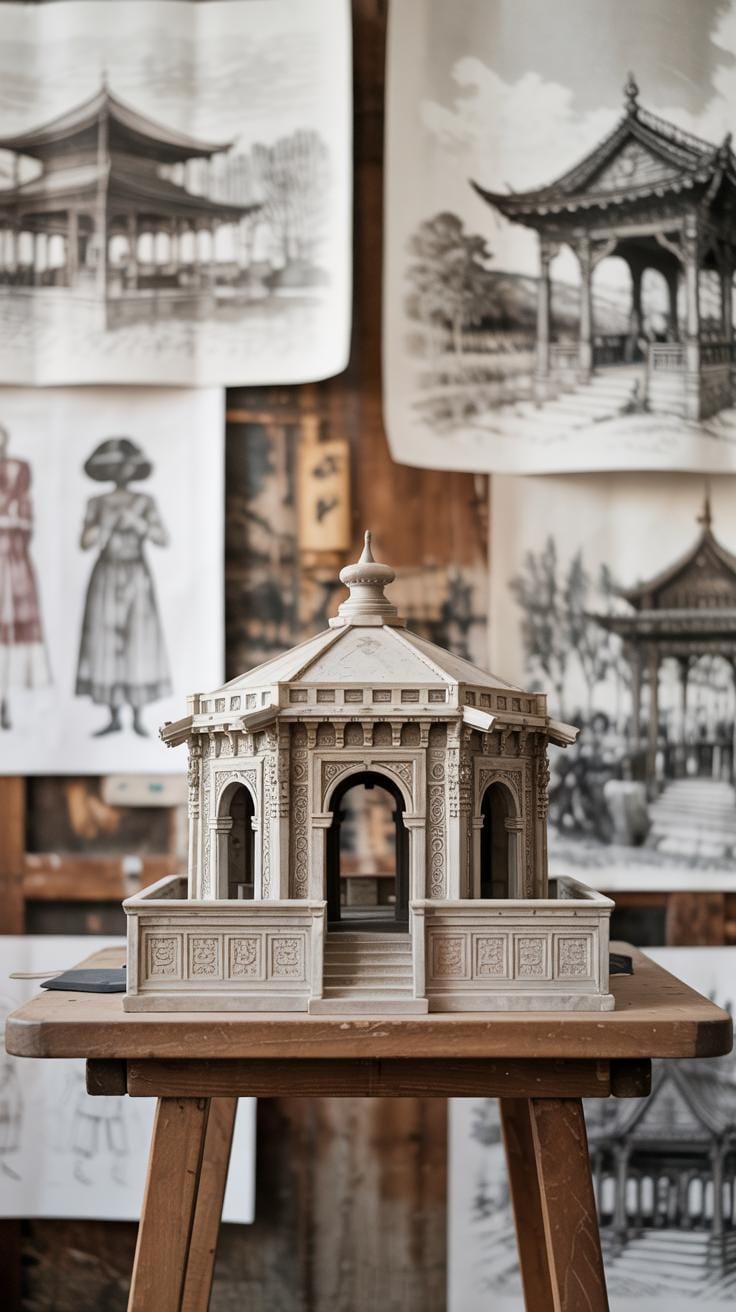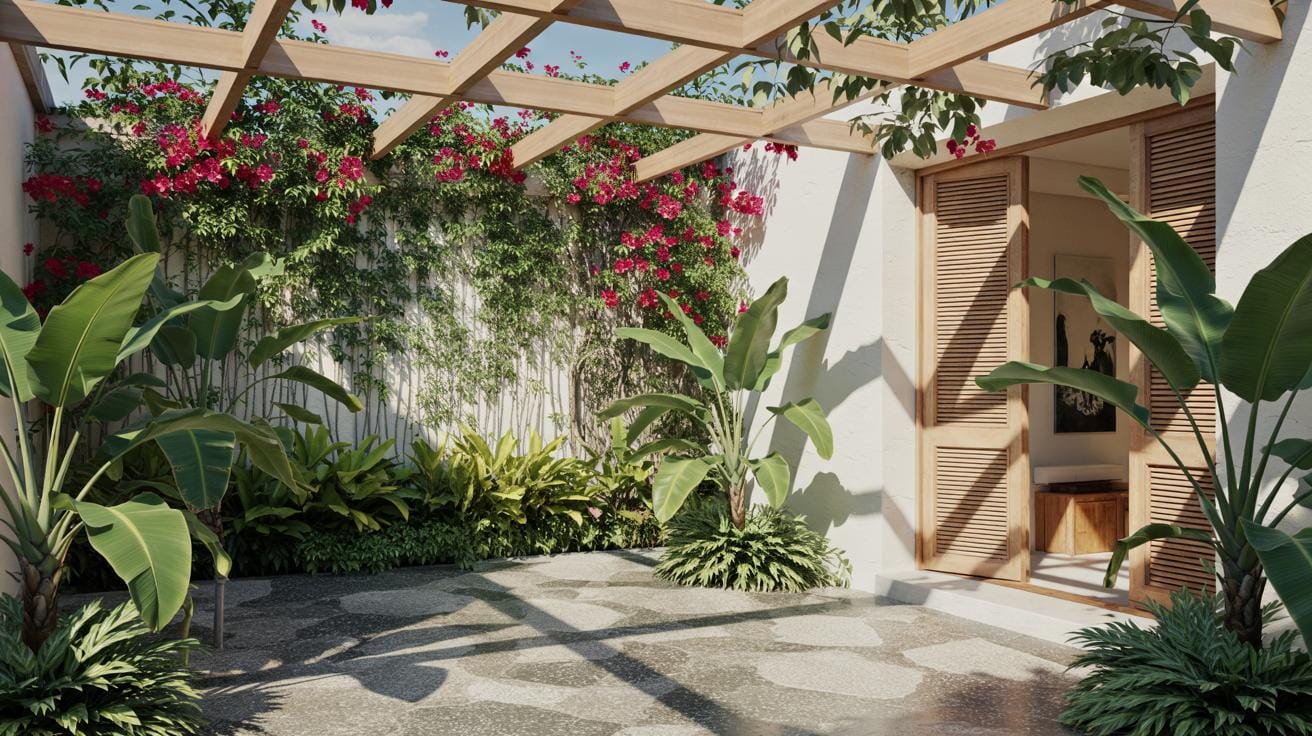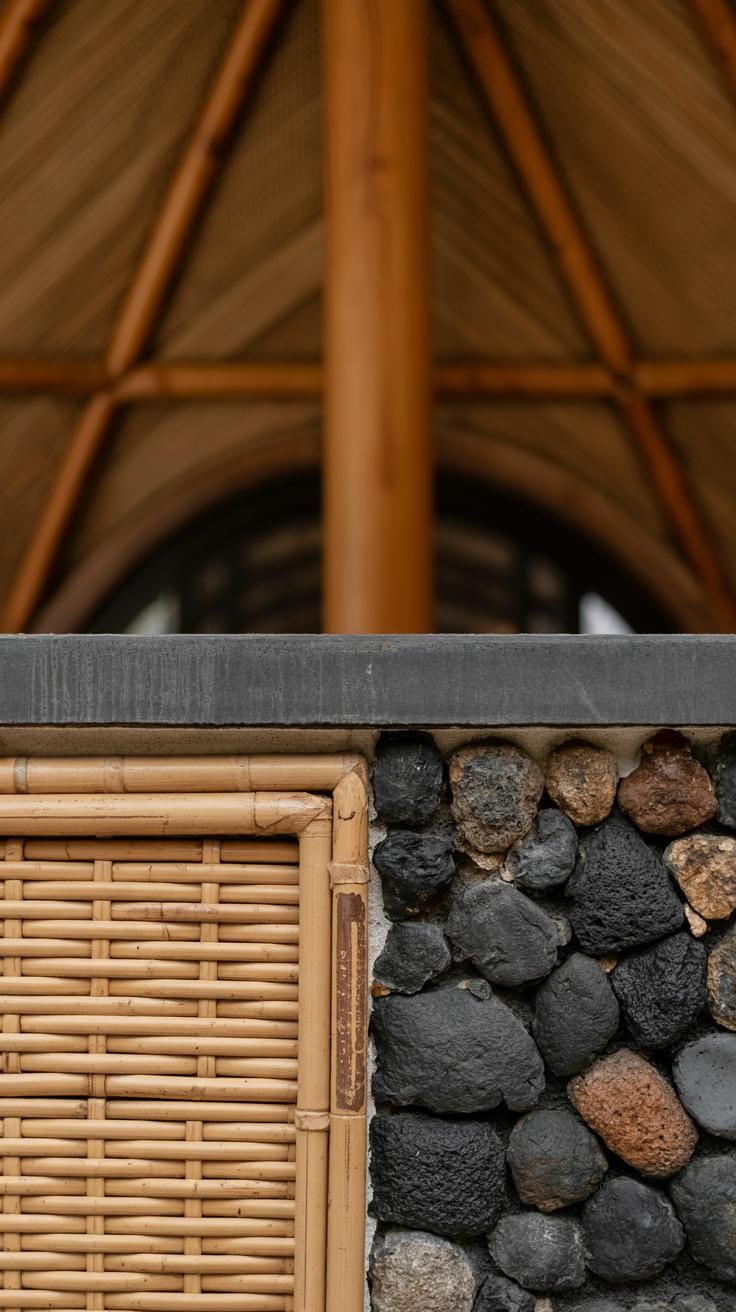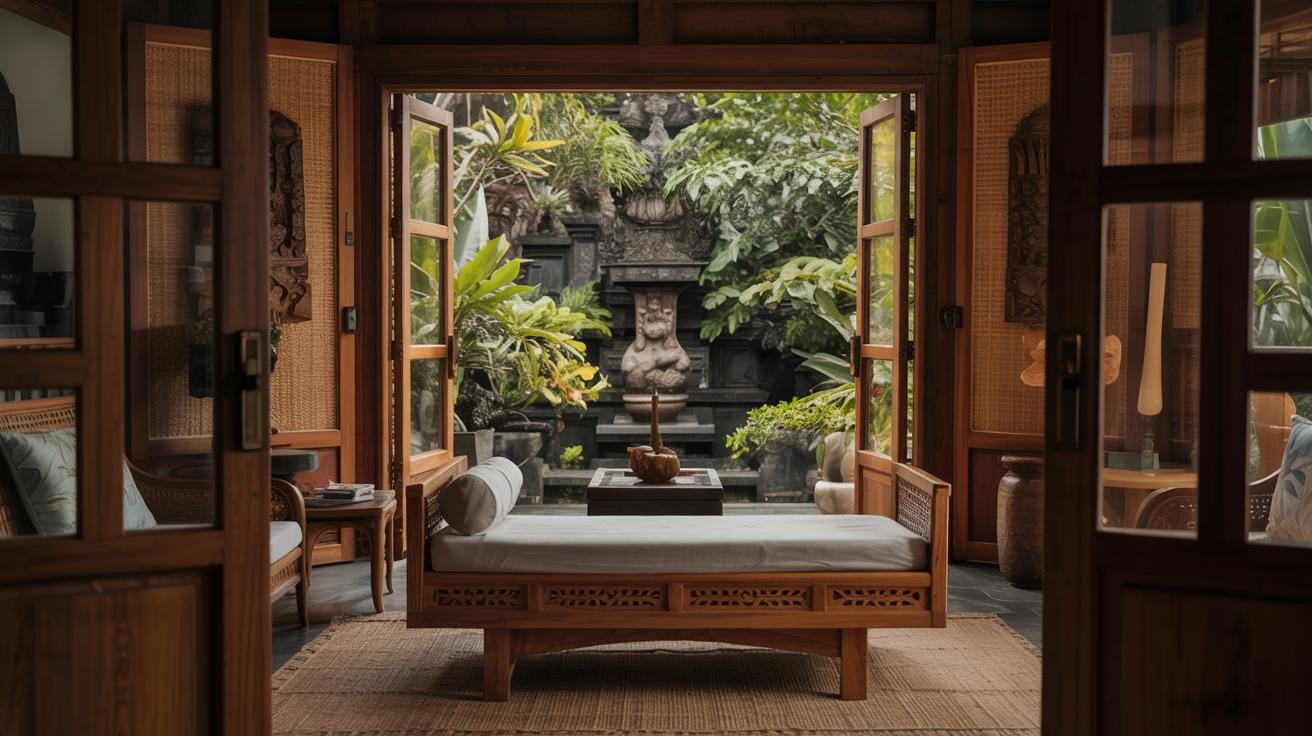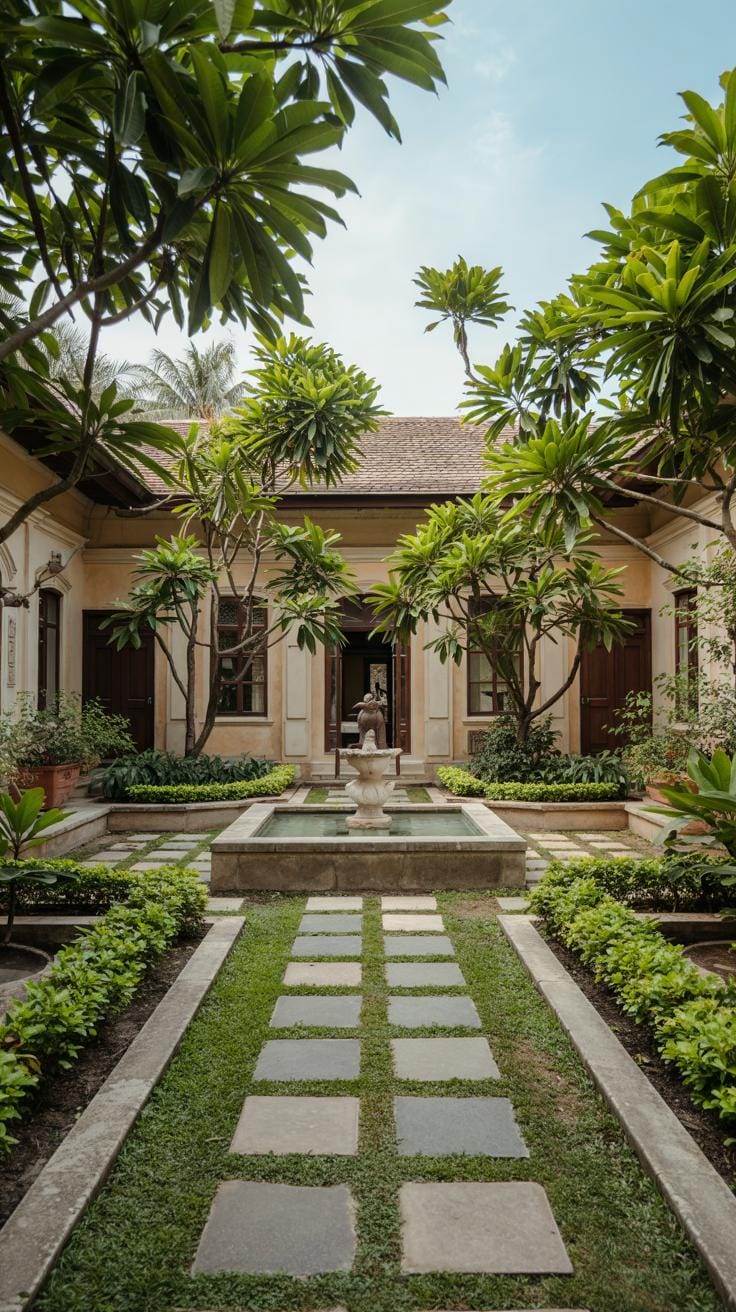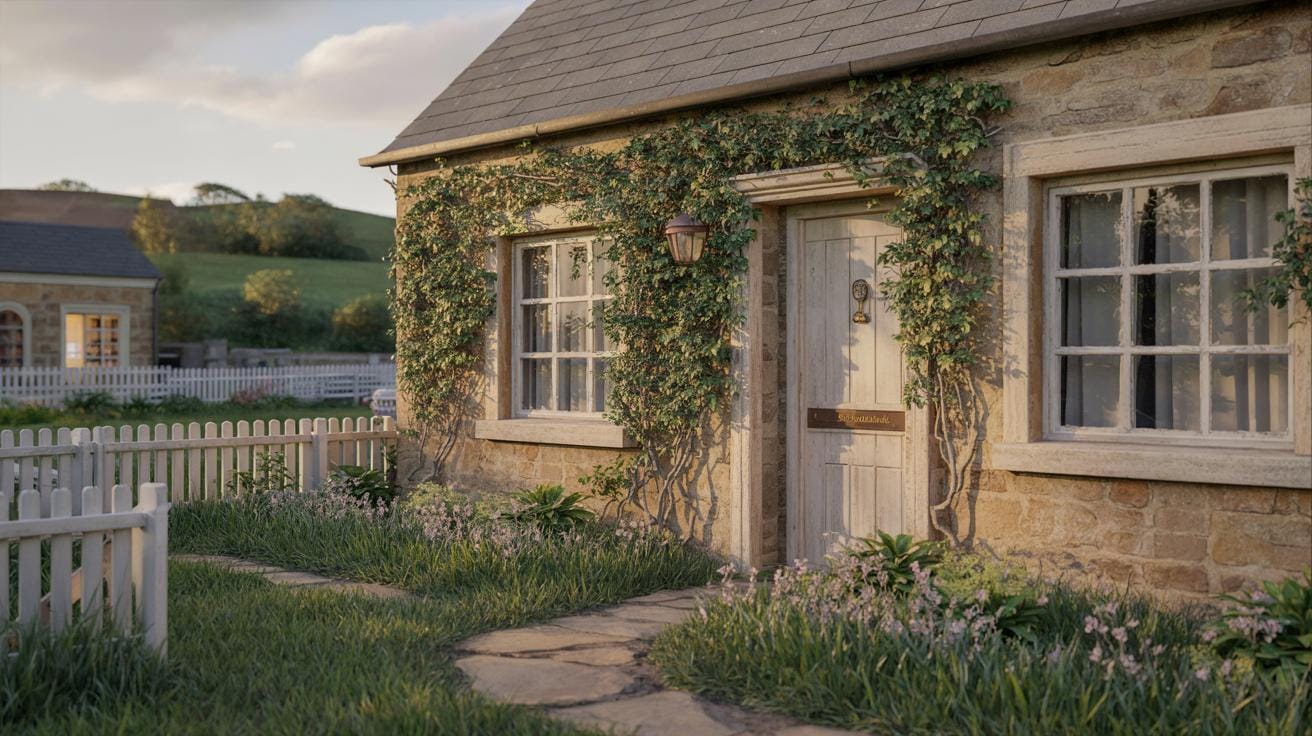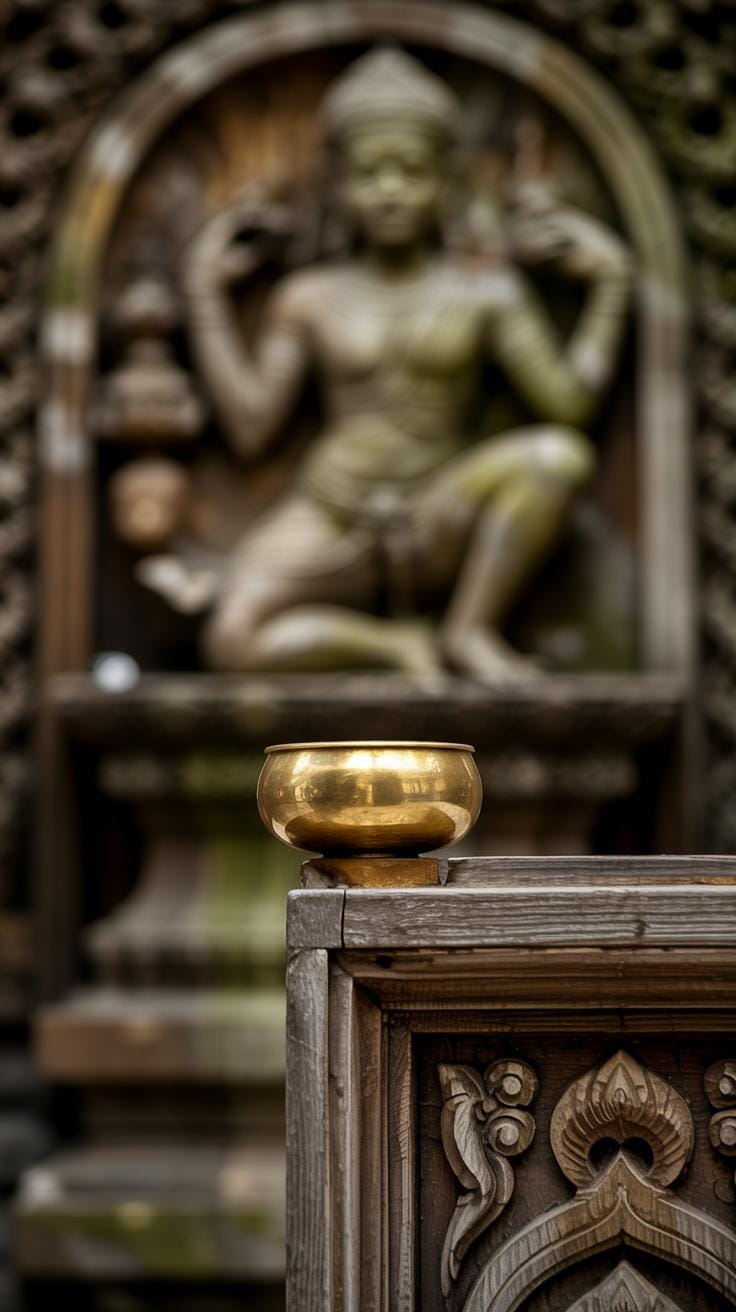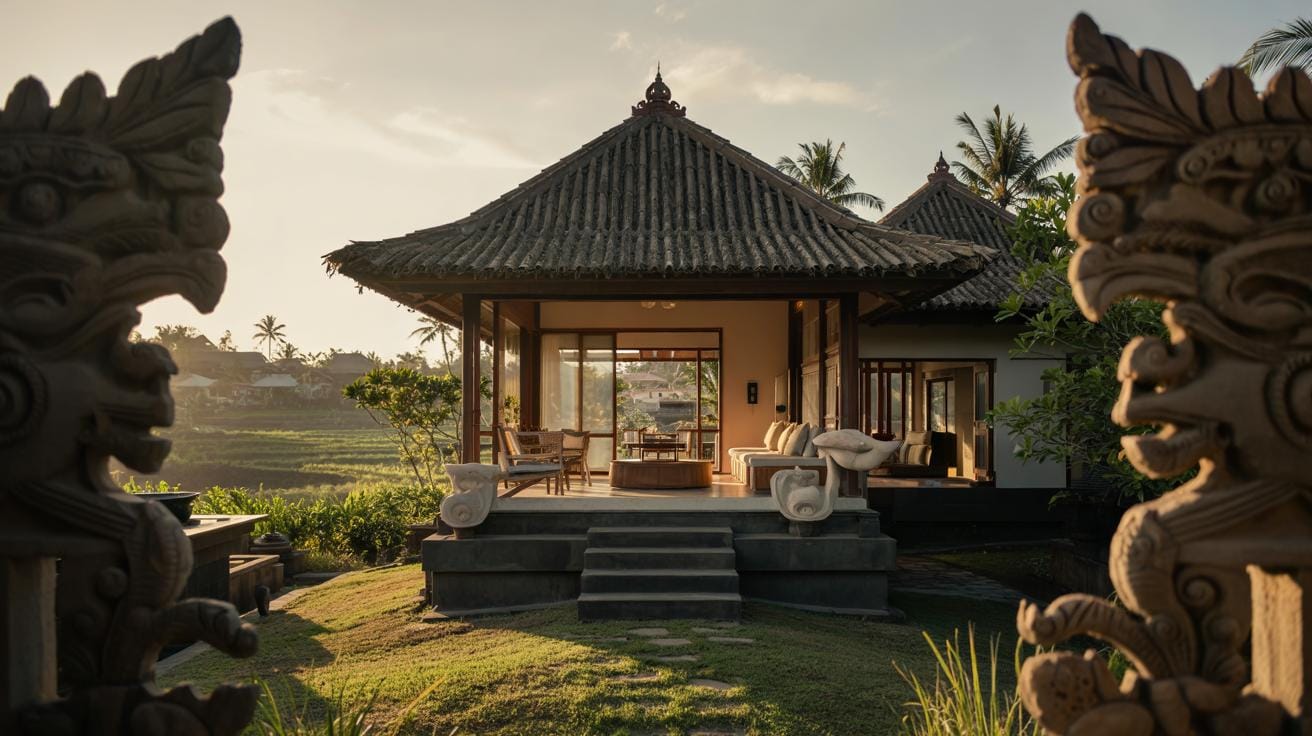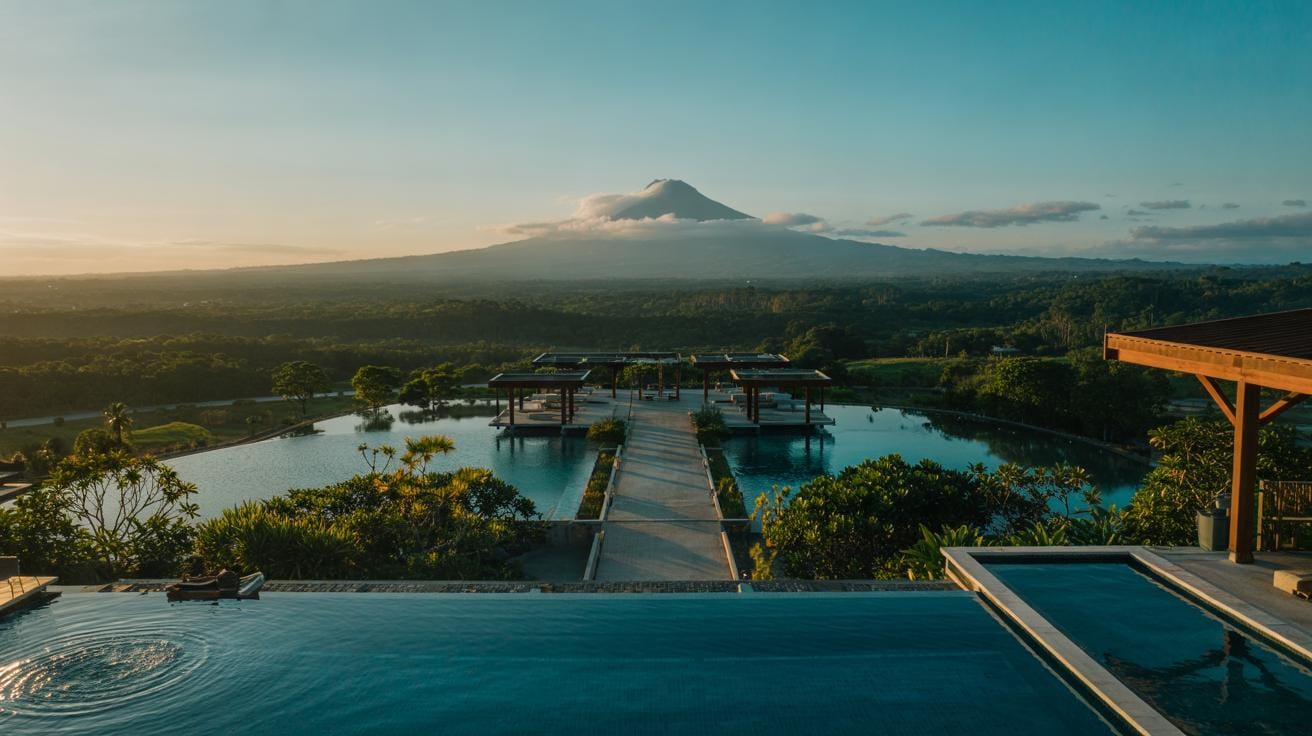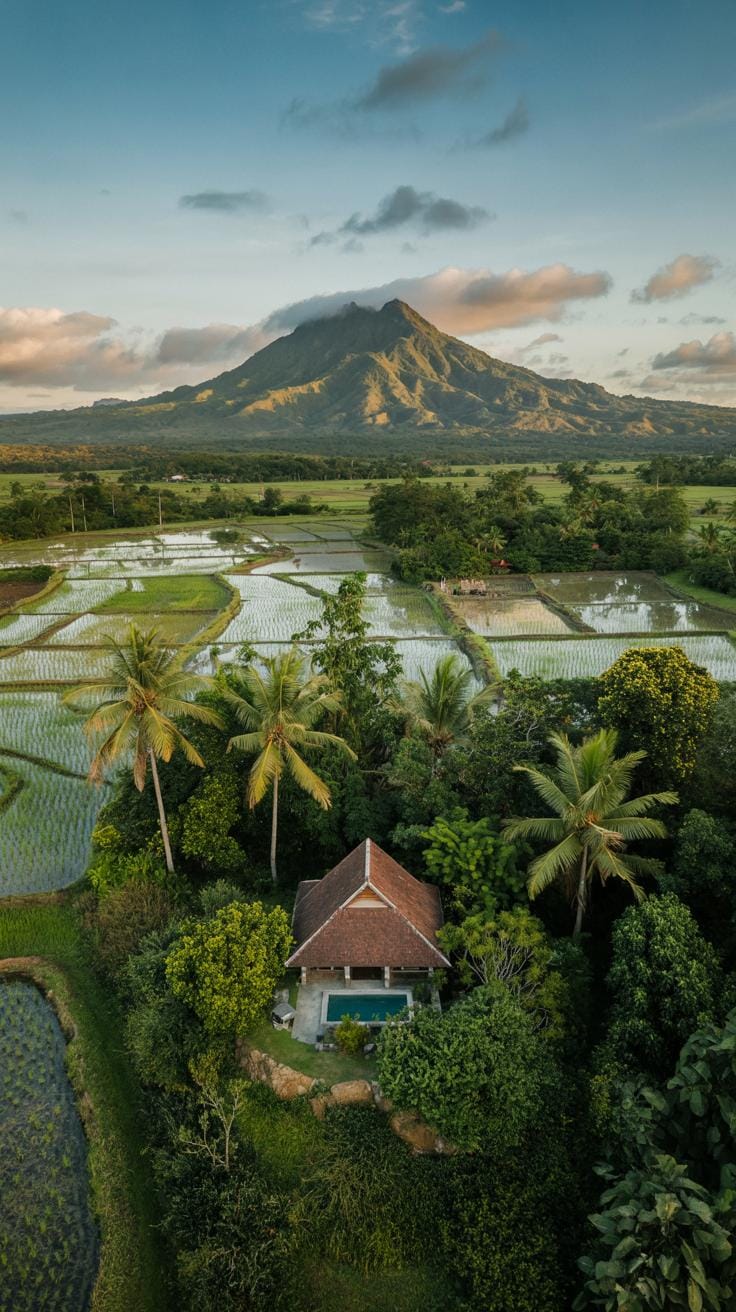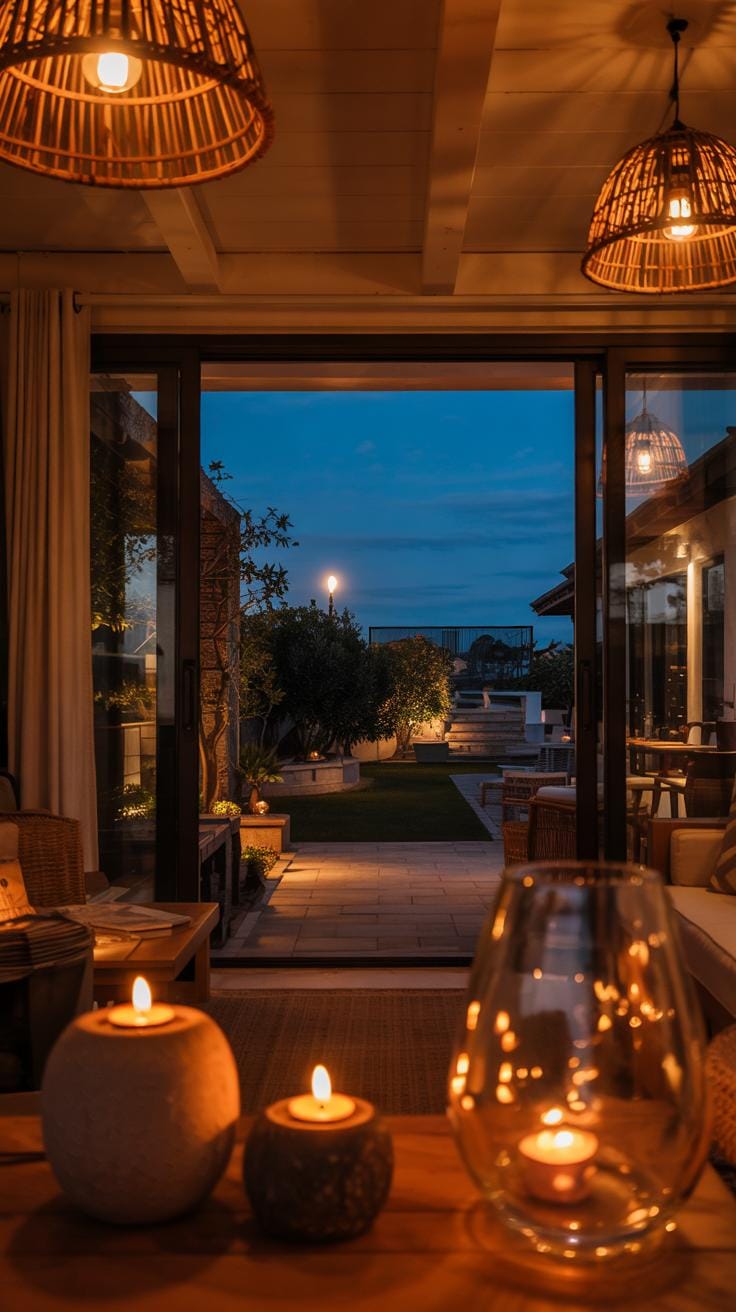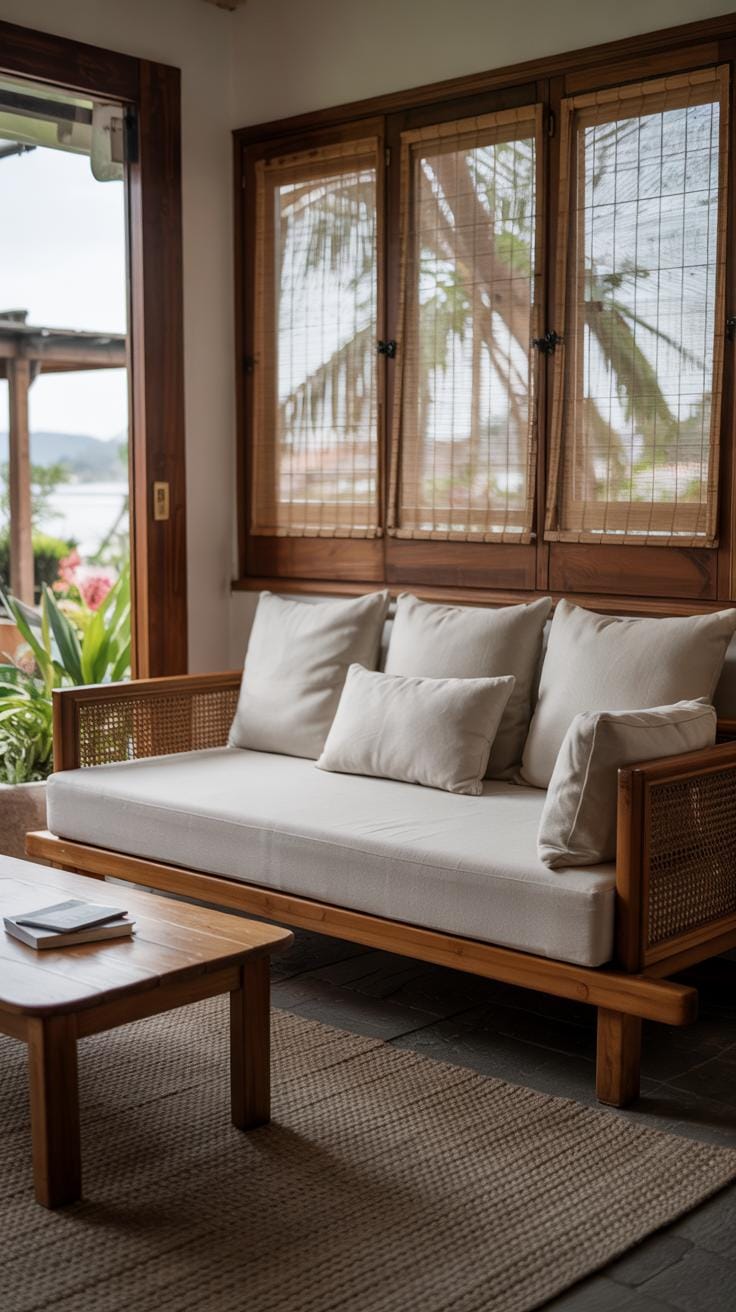Introduction
Balinese villas have a unique charm that comes from centuries of architectural tradition and cultural influence. Creating a villa in this style means more than just copying designs. It involves understanding deeper concepts of harmony, balance, and the use of natural materials. Your journey to crafting a Balinese villa begins by learning about its philosophy, materials, and spatial design that make the style so distinct.
Every element in a Balinese villa has a purpose. From the broad use of organic materials like teak wood and bamboo to spatial zoning dictated by spiritual beliefs, the style promotes peace and balance. This article guides you through essential details that make a Balinese villa authentic. It helps you build a space that resonates with both tradition and function.
Understanding Balinese Architectural Philosophy
Balinese architecture grows from ideas that connect people, nature, and spirit. One key concept, Tri Hita Karana, teaches that well-being comes from balance among humans, nature, and the divine. This shapes villa design by encouraging spaces where family and guests gather comfortably, gardens that invite nature in, and shrines for spiritual reflection.
Spatial plans follow Tri Mandala and Sanga Mandala principles. These divide the villa into zones from public to sacred areas. These zones shape where you place rooms, pathways, and temples, respecting sacred directions. This arrangement creates harmony and clear flow in your home.
These principles do more than organize space. They guide you to build with respect for the environment and the spiritual world. Reflect on how your villa can express balance. How will you invite nature in? What spaces will honor your relationships and beliefs? Your design can live these ideas daily.
Tri Hita Karana Harmony Concept
Tri Hita Karana centers on three relationships: among people, with nature, and the divine. When designing your villa, place family and guest areas where social interactions feel natural. Make room to welcome visitors and support your community’s spirit.
Materials you choose should connect to the earth, keeping your design grounded. Open spaces and gardens offer spots for meditation or simple calm amid nature’s presence. Dedicated shrines or quiet corners honor spiritual practices and invite blessings.
Ask yourself how your home will reflect these three elements. Will your layout help build community bonds? Can the natural settings offer peace and shade? How will sacred spaces support your spiritual needs? Tri Hita Karana helps keep these choices balanced and purposeful.
Spatial Zoning with Tri Mandala and Sanga Mandala
Tri Mandala divides your villa into three zones: outer, middle, and inner sanctums. The outer zone faces the street and welcomes guests. The middle is daily living space. The inner zone holds sacred areas, like family shrines. This flow controls privacy and spiritual focus.
Sanga Mandala adds detail by mapping nine directions. Each side carries meaning and guides where you place doors, shrines, or gardens. For example, north often relates to water or spiritual energy. Aligning spaces with these directions enhances the villa’s harmony.
Consider your plot’s layout with these rules. How will you organize rooms to respect these zones? Which areas need open access and which need seclusion? Thoughtful zoning shapes how your villa feels and functions, linking daily life with culture and spirit.
Selecting Natural Materials for Authenticity
Your Balinese villa will gain authenticity by using natural materials common in traditional homes. Thatched roofing made from ijuk fibers or dried coconut leaves supplies excellent insulation and breathability. Bamboo and coconut wood appear in walls, ceilings, and furniture thanks to their light weight and flexibility. Teak wood offers long-lasting strength for structural beams and doors, resisting termites and weather damage.
Stone grounds the villa both physically and visually. Combining these materials creates a balance between durability and environmental care. Using wood from renewable sources and natural fibers helps you reduce your home’s carbon footprint. Are you ready to choose materials that work with Bali’s climate and spiritual essence while keeping your villa eco-friendly?
Traditional Roofing and Woodwork
Roofing in Balinese villas often uses ijuk fibers or dried coconut leaves because they repel water and withstand heat. Hardwood shingles also protect the home while offering a neat look. Each roofing style connects you to local crafts and sheds rain quietly, keeping interiors cooler.
Teak wood plays a key role in both structure and decoration. It holds heavy roofs and shapes intricate carvings on doors and window frames. Coconut wood complements teak by offering a softer texture perfect for furniture and ornamental details. You get durable, beautiful woodwork that matches the villa’s natural surroundings and cultural traditions.
Stone Foundations and Carvings
Stone like sandstone or andesite forms the foundation of many Balinese villas. These stones resist moisture and provide solid bases for wooden structures. They protect against erosion and insect damage, extending the life of your villa’s frame.
Stone carvings appear throughout villa grounds as statues and panels. These serve both decorative and spiritual roles, guarding the home and inviting positive energy. Each carving involves skilled artisanship, making your villa unique. Could adopting such natural stone elements add strength and meaning to your design?
Crafting Spatial Organization and Courtyards
The layout of a Balinese villa balances openness and privacy through creative spatial organization. Multiple pavilions surround central courtyards, creating distinct areas for different activities.
These ringed walls serve a dual purpose. They protect your home from unseen spirits, in line with Balinese belief, while offering necessary privacy from neighbors and the outside world. This setup also encourages natural airflow, keeping interiors cool without relying on mechanical ventilation.
Courtyards act as the core of social life, making it easy to gather family and friends in shaded, open spaces. Visual connections between pavilions and gardens create a serene atmosphere that blends indoor and outdoor living. How could you arrange your rooms around such a courtyard to maximize comfort and connection?
Courtyard Design Principles
Traditional Balinese courtyards are carefully sized and placed to support both daily living and spiritual practices. They usually occupy the villa’s center, acting as the home’s heart. At this point, social interaction and religious rituals naturally take place.
The courtyard’s open area brings daylight and fresh air into surrounding pavilions. Balancing size is key—too large and it may feel cold; too small and it limits functionality. Consider your climate and lifestyle as you plan your courtyard’s dimensions.
The courtyard also simplifies access between pavilions, helping you move comfortably while staying connected to nature. Will your courtyard become a relaxing retreat or a lively gathering place for family and guests?
Pavilion Structures and Their Uses
Small pavilions around courtyards serve distinct roles such as relaxing, dining, or hosting ceremonies. Their open walls provide shade while maintaining views of gardens, blending the inside with the natural environment.
Each pavilion supports social functions—family meals, quiet reading, or traditional offerings. This flexibility makes your Balinese villa live comfortably throughout the day, responding to changing needs.
The design emphasizes a connection to outdoor spaces. Without full walls, pavilions invite cooling breezes and sounds of nature, enhancing relaxation. Imagine your favorite activities unfolding in those airy spaces. Which pavilion will become your personal sanctuary?
Incorporating Balinese Artistry and Ornamentation
Balinese villa design deeply values the island’s rich sculpting traditions. Carvings and sculptures are not only decorative but also carry spiritual meaning. You will often find wooden and stone carvings featuring floral designs and mythological creatures. These adorn doors, gates, and interior walls, creating layers of meaning. Each piece connects the home to Balinese culture and beliefs.
These traditional motifs invite protective and good spirits into your space while discouraging negative forces. The carved details also bring texture and rhythm to your villa’s design. Consider including reliefs or panels around doorways or along hallways to infuse authenticity.
How can you use these artistic forms to create a home that feels both beautiful and spiritually aligned? Think about how each carved motif might tell a story or reflect a purpose as part of your villa’s identity. Balinese artistry helps you anchor your design in genuine cultural roots.
Wooden Carvings and Symbolism
Wood carving is a central art in Balinese villa architecture. Skilled artisans use teak or jackfruit wood to carve floral and mythical figures. Gate guardians often take the form of fierce, protective creatures known as Dwarapala. These figures stand by the entrance to ward off evil spirits and offer safety.
Detailed floral patterns symbolize fertility, growth, and harmony with nature. These patterns commonly appear on doors, window frames, and ceiling panels. The carving process involves careful layering of curved lines and intricate cuts to bring life to the wood.
If you want authenticity, consider commissioning wooden gates or doors with these traditional designs. They do more than beautify your villa—they set a protective tone. Ask yourself how these wooden carvings can create a meaningful threshold between your home and outside world.
Stone Sculptures and Protection
Stone sculptures provide another layer of cultural expression and spiritual protection. Guardian statues carved in volcanic stone are typical features at villa entrances or temple-like corners in gardens. These statues, often of Barong or Rangda figures, serve to ward off negative energies.
Decorative waterspouts featuring animal heads or sacred symbols channel water while adding to the villa’s character. In Balinese belief, water is purifying, and these stone elements often mark sources of spiritual cleansing.
Integrating stone sculptures gives your villa a solid connection to local traditions. They stand as silent protectors and enrich your outdoor or indoor space with meaning. Could these sculptures become focal points that welcome and shield your home?
Designing with Environmental Harmony in Mind
Balinese architecture blends thoughtfully with nature through careful choices in materials, orientation, and landscaping. Using bamboo, teakwood, and volcanic stone sourced locally helps your villa connect to the surroundings and lowers its environmental impact. Placing buildings to face prevailing winds and the sun’s path promotes natural light and airflow, reducing the need for artificial cooling.
How could your villa sit on the land to maximize comfort while respecting the environment? Sustainable choices like rainwater harvesting and solar shading support eco-friendly living without sacrificing style or authenticity.
Consider how each element of your design works together to create a home that feels part of the natural world. Balinese villas invite you to live gently with the earth rather than dominate it.
Climate-Responsive Building Techniques
Balinese roofs rise steeply with wide eaves to shield interiors from heavy rain and direct sunlight. This design directs heat away and encourages air to flow naturally underneath. Open floor plans and large windows connect indoor spaces with the garden, increasing ventilation and reducing indoor temperature.
You can use lightweight materials like bamboo and woven rattan to avoid trapping heat inside. Thick stone or clay floors stay cool underfoot even on hot days. These elements create a comfortable place that requires little air conditioning in the tropical heat.
How might adapting your roof shape or floor layout help your home stay cool without extra energy?
Landscaping and Natural Surroundings
In Balinese villas, gardens play a key role in calming the mind and linking the house to nature. Tropical plants such as frangipani, hibiscus, and broad-leaf palms add shade and color. Water features like lotus ponds and small streams bring soothing sounds and support wildlife.
Arranging paths and greenery in natural, flowing shapes encourages relaxation and quiet moments. Stone lanterns and carved statues placed around the garden connect the outdoor space to cultural traditions.
Ask yourself how your garden layout and plant choices can deepen your villa’s bond with its environment while offering a peaceful retreat every day.
Balinese Villa Lighting and Ambiance
Light plays a vital role in shaping the experience of a Balinese villa. It highlights the architectural details, sets the mood, and helps you use each space comfortably throughout the day. Within the villa, light guides the eye to intricate wood carvings or thatched roof structures, giving depth and life to traditional craftsmanship. Outside, soft lighting accentuates gardens and pathways, encouraging evening relaxation and socializing.
Balinese design uses lighting not only to illuminate but to enrich. Think about how natural shifts from bright sunlight to twilight can create dynamic atmospheres. How can your lighting plan support this, creating spaces that feel inviting morning, noon, and night? Matching artificial lighting with natural rhythms helps maintain a connection to the outdoors and cultural authenticity.
Maximizing Natural Light
Positioning your villa to capture sunlight is essential. Openings such as large windows, wide doors, and open-air verandas draw daylight deep inside. Skylights provide direct overhead sun, filling central rooms with natural brightness. Carefully placed courtyards serve as light wells, creating airy spaces where sunlight bounces off walls to reduce shadows.
Consider how the sun moves through your site. South-facing openings bring softer light, while east and west ones capture morning and afternoon sun. You want enough light to avoid gloom but not so much to cause heat buildup. How could you balance openness with shading solutions like overhangs or screens to control light flow?
Traditional and Modern Lighting Fixtures
Incorporate traditional Balinese lanterns and candles to evoke warmth during the evening. Handcrafted lanterns often use bamboo or woven materials, casting gentle, patterned light that complements natural textures. Candlelight brings a soft glow that encourages calm and reflection.
To meet practical needs, combine these with modern fixtures designed to blend subtly with Balinese aesthetics. LED lights with adjustable brightness help you highlight artwork or architectural features without overpowering the natural ambiance. Outdoor solar lanterns add low-maintenance illumination to gardens and walkways. How will you merge old and new lighting elements to create a seamless ambiance that respects tradition yet supports daily life?
Creating Functional and Comfortable Interiors
Balinese villas combine traditional design with modern living needs. The interior must feel open and airy while offering practical comfort. Outdoor and indoor spaces flow seamlessly, allowing fresh air and natural views to enter easily. This openness reflects the Balinese respect for nature.
Rooms often focus on social connection. Living areas gather family and friends in a shared space with easy seating arrangements. Bedrooms provide privacy but stay close to communal zones to keep balance. You should consider room flow, making movement smooth and natural.
Colors inside the villa often come from nature—earth tones, soft greens, and neutral shades. These bring calmness without overwhelming. Artworks, carvings, or woven decorations tell stories of Balinese culture while adding personality. Using these elements carefully helps your villa stay authentic yet easy to live in.
Furniture and Room Arrangement
Furniture in Balinese homes usually includes wooden pieces crafted from teak or bamboo. Chairs and tables feature simple lines with carved details. Large, low sofas invite relaxation and conversation. Arrange seating areas to face each other, encouraging interaction.
Blending old and new means combining traditional teak beds or rattan chairs with modern cushions and fabrics. Make space for both comfort and style. Avoid clutter by choosing essential pieces that serve multiple uses, keeping rooms functional.
Placement matters. Position beds to catch natural breezes but away from direct sunlight. Group furniture around natural focal points like a view or a decorative wall. Would your furniture choices create cozy spots for gathering or quiet moments?
Textiles and Decorative Elements
Natural fabrics like cotton, linen, and silk suit Balinese interiors best. They feel light and cool in the tropical climate. Traditional patterns such as ikat or batik bring texture and color without overpowering the room.
Use textiles as throws, cushions, or curtains to soften hard surfaces. Earthy colors like brown, ochre, and deep reds match the villa’s wood and stone elements well. These fabrics add warmth and invite touch.
Decorative objects often include hand-carved wooden masks, woven baskets, and small stone statues. Display these thoughtfully to avoid clutter. Incorporate pieces that reflect local artistry and tell a story. How can your choice of fabrics and art reflect your respect for Balinese culture while making your home comfortable?
Practical Tips for Building Your Balinese Villa
Planning and Resources
Choosing the right site sets the foundation for your Balinese villa. Look for land that respects natural water flow and sunlight. Traditional Balinese homes often face east or the mountains to capture positive energy. Consider the wind direction to keep your villa cool. Spend time visiting local markets to find authentic materials like teak wood, bamboo, and natural stone. These materials bring warmth and durability to your home. Connect with skilled artisans familiar with Balinese crafts—carvers, weavers, and builders who understand local techniques. Ask for examples of their work and visit completed projects. How will you blend cultural respect with the needs of today? Balancing tradition with your lifestyle creates a villa that feels both real and comfortable.
Maintenance and Longevity
Natural materials require care to keep their beauty and strength. Regularly treat wood with oils or natural preservatives to prevent cracking and insect damage. Clean stone surfaces gently to avoid eroding fine details. A sturdy roof protects your villa from heavy rain and sun exposure—check it often for leaks or damage. Repainting carved wood with natural colors helps preserve cultural patterns while maintaining structural integrity. Schedule seasonal inspections to spot wear early. What habits can you develop to protect your villa’s heritage? Maintaining your home keeps the authentic spirit alive and ensures your villa remains a safe, welcoming place for years to come.
Conclusions
Your Balinese villa is more than a home; it is a reflection of harmony between human life, nature, and spirituality. Following traditional philosophies ensures your villa will not only look authentic but also feel balanced and inviting. You have seen how materials, design, and cultural symbols come together in this architectural style.
Now consider how these elements translate into your project. Which principles will you emphasize? How will you incorporate natural materials? Use this knowledge to create a villa that stands apart with true Balinese character. Let this guide inspire your design choices and bring your vision to life with both authenticity and practicality.


